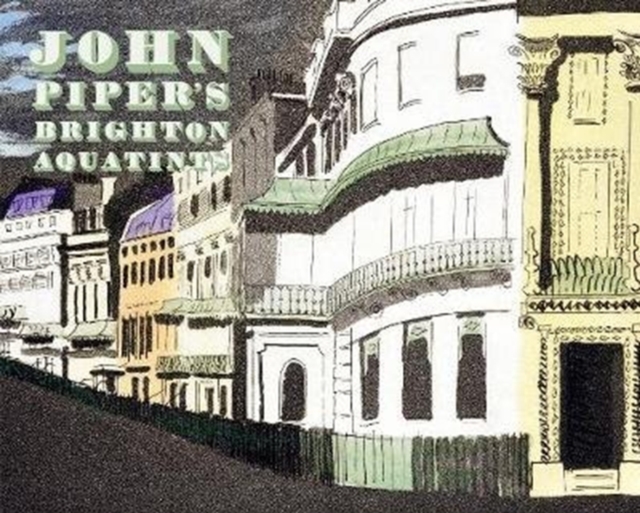CITESTE MAI MULT
Detalii
Descriere RO
Brighton has buildings unlike those of any other British seaside resort, from the onion-domed Royal Pavilion, to Victorian hotels and churches, and the sleek modernism of Wells Coates’s Embassy Court. These, and other features such as the lost West Pier, the stucco-covered terraces and even the humble rows of houses seen from the railway station, appear in John Piper’s 1939 book, Brighton Aquatints.
Issued in the first months of the Second World War by the publishers Gerald Duckworth, this luxurious limited edition with the artist’s signature of thunderous dark skies, was both strangely inappropriate and perfectly on cue for its time. Despite the British public having other things to worry about, Brighton Aquatints was extensively and enthusiastically reviewed. Escapism in art and literature was one of the understandable responses to the war, and the route often led back to the nineteenth century, the period that Piper’s book evoked, with its mixture of Regency stucco and Victorian red brick and cast iron. Although sequels were planned, Brighton Aquatints was the only genuine example from the whole of Piper’s oeuvre of a proper ‘artist’s book’.
It was unique in other ways. No other British artist used the aquatint medium at this time for a whole book, but for Piper, the technique had a particular meaning in relation to his subject matter. When aquatint became popular in the Picturesque period, limpid hand-colouring was often added to the prints of architectural designs and picturesque views, so Piper himself coloured 50 special copies of the edition of 250, with some help from John Betjeman.
The motive for reproducing the whole of the plates at the original size, along with the text in both plain and coloured versions, 80 years later, is primarily to share the pleasure of Piper’s creation more widely with the benefits of modern colour reproduction, recreating the experience of turning the pages to discover each successive scene, with Piper’s words on the facing page. Secondarily, the new edition has offered an opportunity for Alan Powers, a noted historian of graphic arts of the mid-century, to dig deeper into the story behind the book. More than most books, Brighton Aquatints offers insights into the spirit of the late 1930s as a remarkable period of transition.
Piper represented the end point of a collective English rethinking of the role of locality and its significance in the world where many voices claimed that these no longer mattered. Brighton Aquatints is the distilled essence of romantic modernism, that oxymoron that captures the spirit of its own time.
EdituraThe Mainstone Press
Dimensiuni250 x 325 x 23
Data Publicarii02/12/2019
Format
Cartonata
Numar pagini112
Aceasta este o carte in limba engleza. Descrierea cartii (tradusa din engleza cu Google Translate) este in limba romana din motive legale.
Brighton are cladiri diferite de cele ale oricarei alte statiuni britanice de pe litoral, de la Pavilionul Royal cu cupola de ceapa, la hoteluri si biserici victoriene si modernismul elegant al Curtii Ambasadei Wells Coates. Acestea si alte caracteristici precum Pierul Vestului pierdut, terasele acoperite cu stuc si chiar sirurile umile de case vazute din gara, apar in cartea lui John Piper din 1939, Brighton Aquatint. Emis in primele luni ale celui de-al doilea razboi mondial de catre editorii Gerald Duckworth, aceasta editie limitata de lux, cu semnatura artistului de cer intunecat tunator, a fost atat de neobisnuit de nepotrivit, cat si de perfect pregatit pentru timpul sau.

